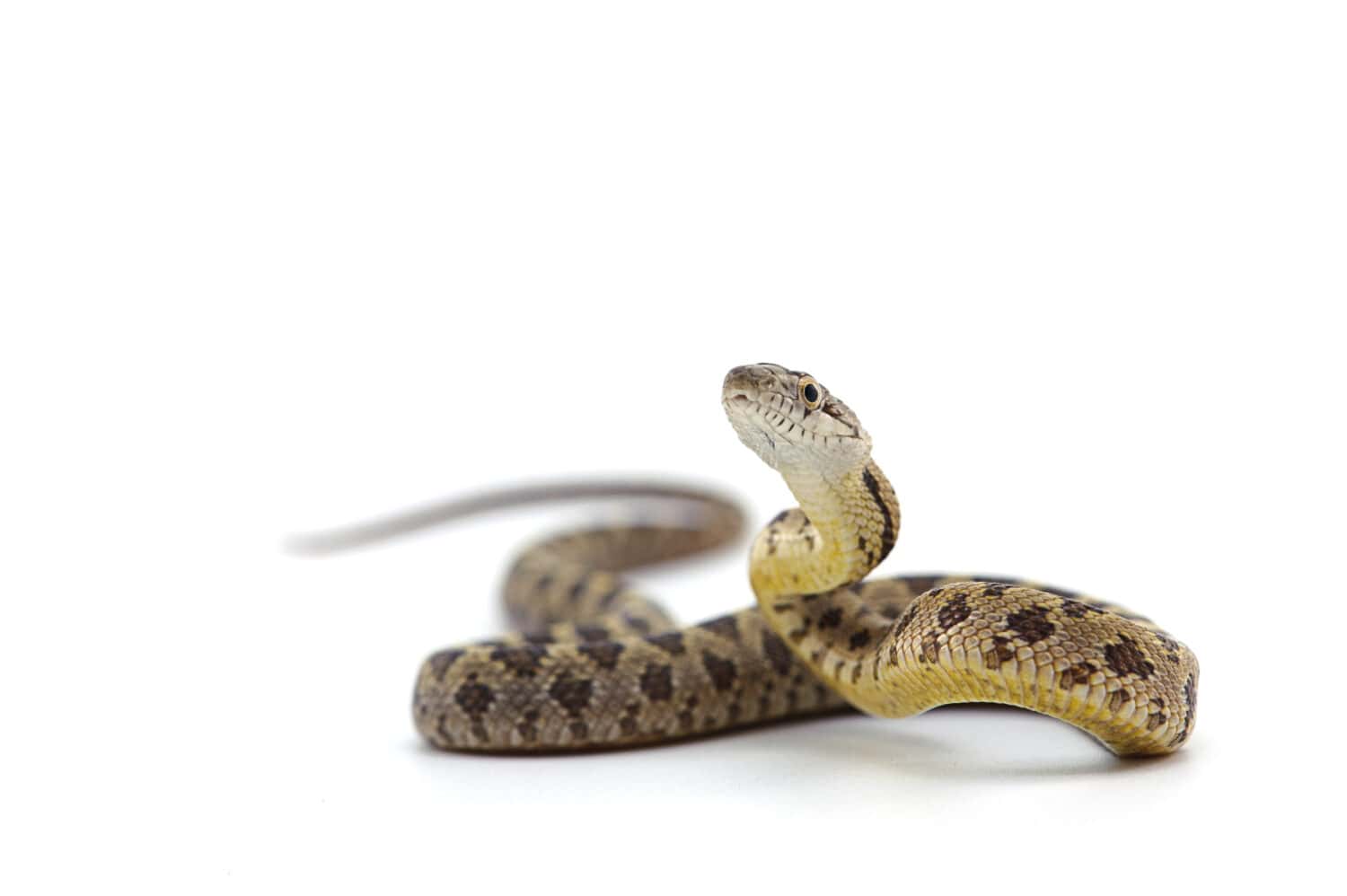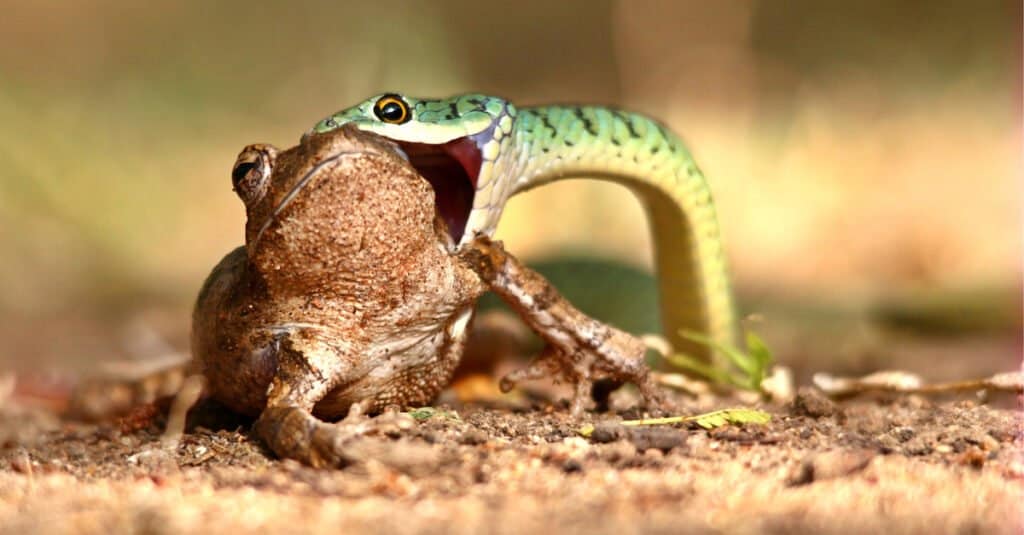Check Out This Snake Go for Some Noodles!
In this adorable video, a massive snake befriends a man making pasta. The video begins by showing a boiling pot of noodles on a man’s stove. Suddenly, the camera pans to a huge snake, waiting with anticipation on the kitchen floor. The snake sticks its tongue out multiple times and gently puts its head against the man’s leg as if it wants to make a request. It’s clear the hungry snake wants a helping of warm, buttery noodles, so it waits and watches the steaming pot of pasta, hoping for a snack.

Watch an adorable and massive snake beg for a snack while a man cooks pasta!
©PetlinDmitry/Shutterstock.com
What Do Snakes Eat?
Snake diet varies according to species and habitat, but all snakes are carnivores, meaning they eat meat. For instance, smaller snake species like corn snakes prefer rodents or small birds. On the other hand, large snakes, such as pythons or anacondas, can swallow large prey like antelopes, monkeys, or even humans!
In addition, snakes that reside in tropical areas will hunt prey found in that area, such as fish and lizards. Conversely, arid regions supply snakes with prey like mice or salamanders. Overall, a snake’s diet varies widely depending on its size, type, and location.

Snakes may feed on birds, rodents, salamanders, amphibians, and even some large mammals.
©Tallies/Shutterstock.com
Can Snakes Eat Human Food?
Snakes do not eat vegetation or plant material, meaning they won’t eat many types of human foods…including noodles. In addition, snakes can only have unprocessed forms of human foods. For example, a pet snake could eat unprocessed eggs, fish, pork, and chicken. However, they must have this food raw. Food that has been seasoned and cooked can be poisonous for snakes to consume. Therefore, responsible snake owners should not feed their snakes any type of processed or cooked meat.

Snakes can eat human food, such as fish or eggs, but they must consume unprocessed, raw meat.
©P_galasso2289/Shutterstock.com
What Happens When a Snake Eats Plant Material?
Snakes will avoid eating fruits or vegetables. Instances in which a snake consumes plant material are typically accidents. For instance, a snake may bite a fruit or vegetable as a defense mechanism, not recognizing the vegetable or fruit as food.
Omnivores are equipped with certain teeth and digestive processes that help break down plant material when feeding. Snakes, on the other hand, do not possess the ability to properly digest plant material. Therefore, a snake’s digestive system may be harmed by feeding on fruits or vegetables. In addition, plant material does not offer any nutritious value to snakes, meaning that a snake could become sick due to a lack of nutrients.

Being carnivores, snakes will only eat meat, and feeding a snake plant material can inhibit proper digestive processes.
©Ariawesomeness/Shutterstock.com
The photo featured at the top of this post is © Mark_Kostich/Shutterstock.com
Discover the "Monster" Snake 5X Bigger than an Anaconda
Every day A-Z Animals sends out some of the most incredible facts in the world from our free newsletter. Want to discover the 10 most beautiful snakes in the world, a "snake island" where you're never more than 3 feet from danger, or a "monster" snake 5X larger than an anaconda? Then sign up right now and you'll start receiving our daily newsletter absolutely free.
Thank you for reading! Have some feedback for us? Contact the AZ Animals editorial team.






